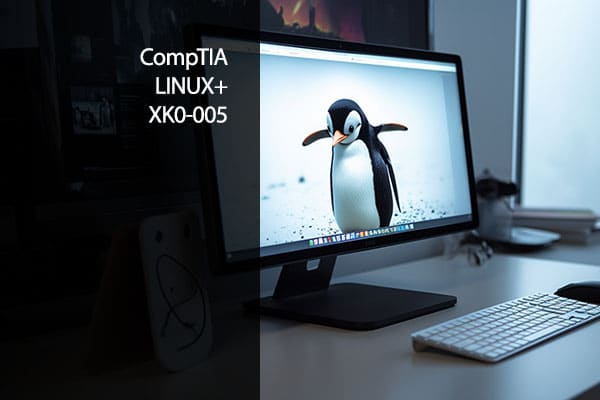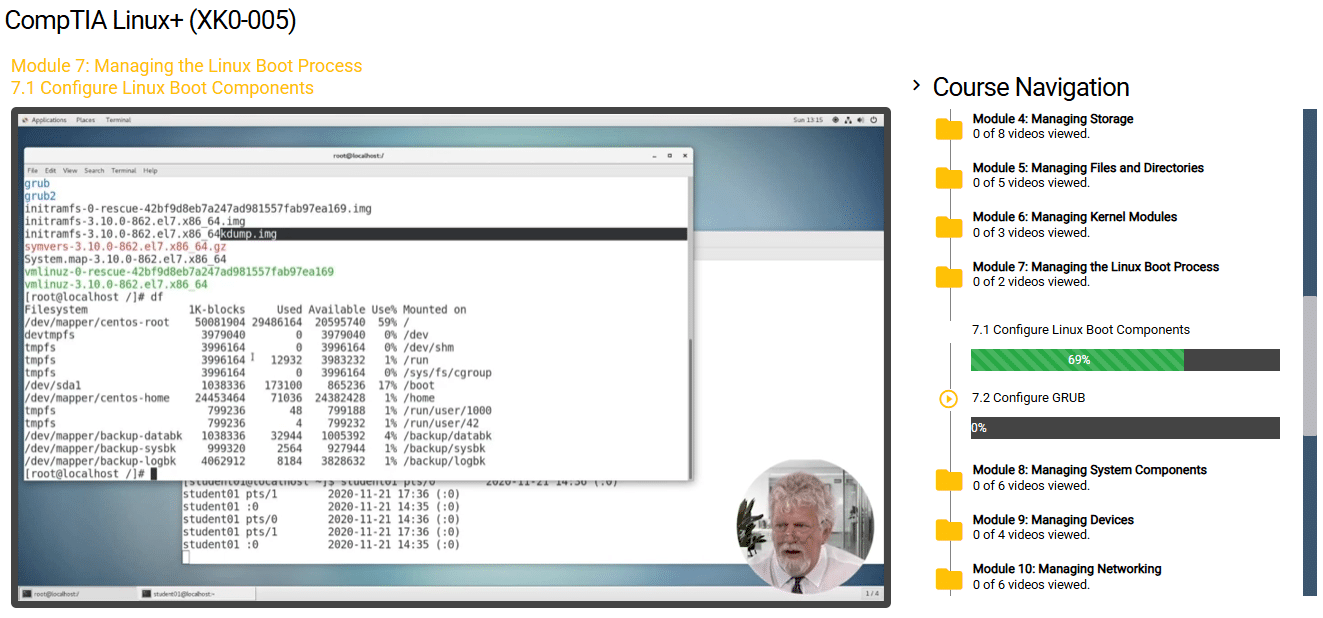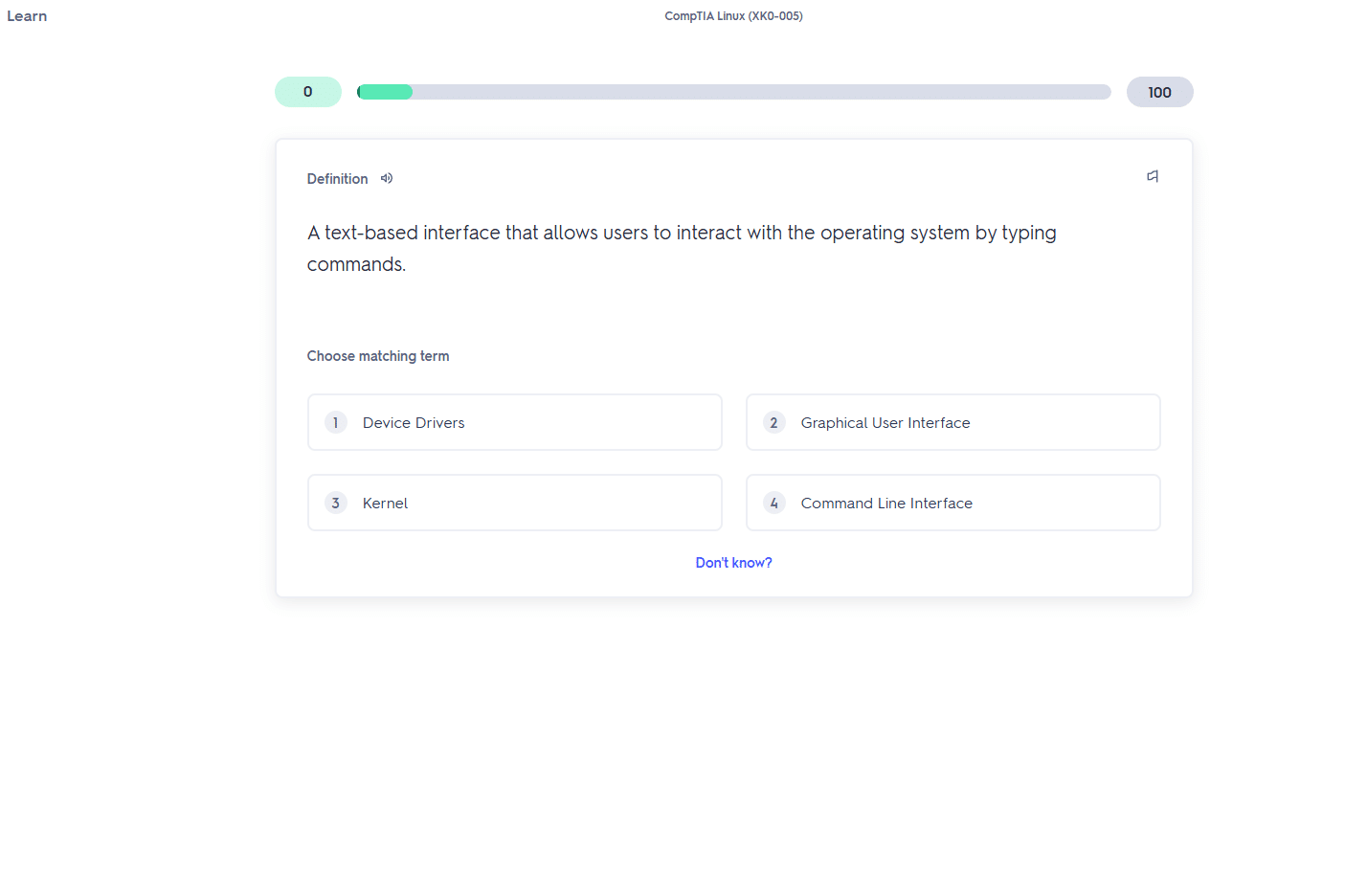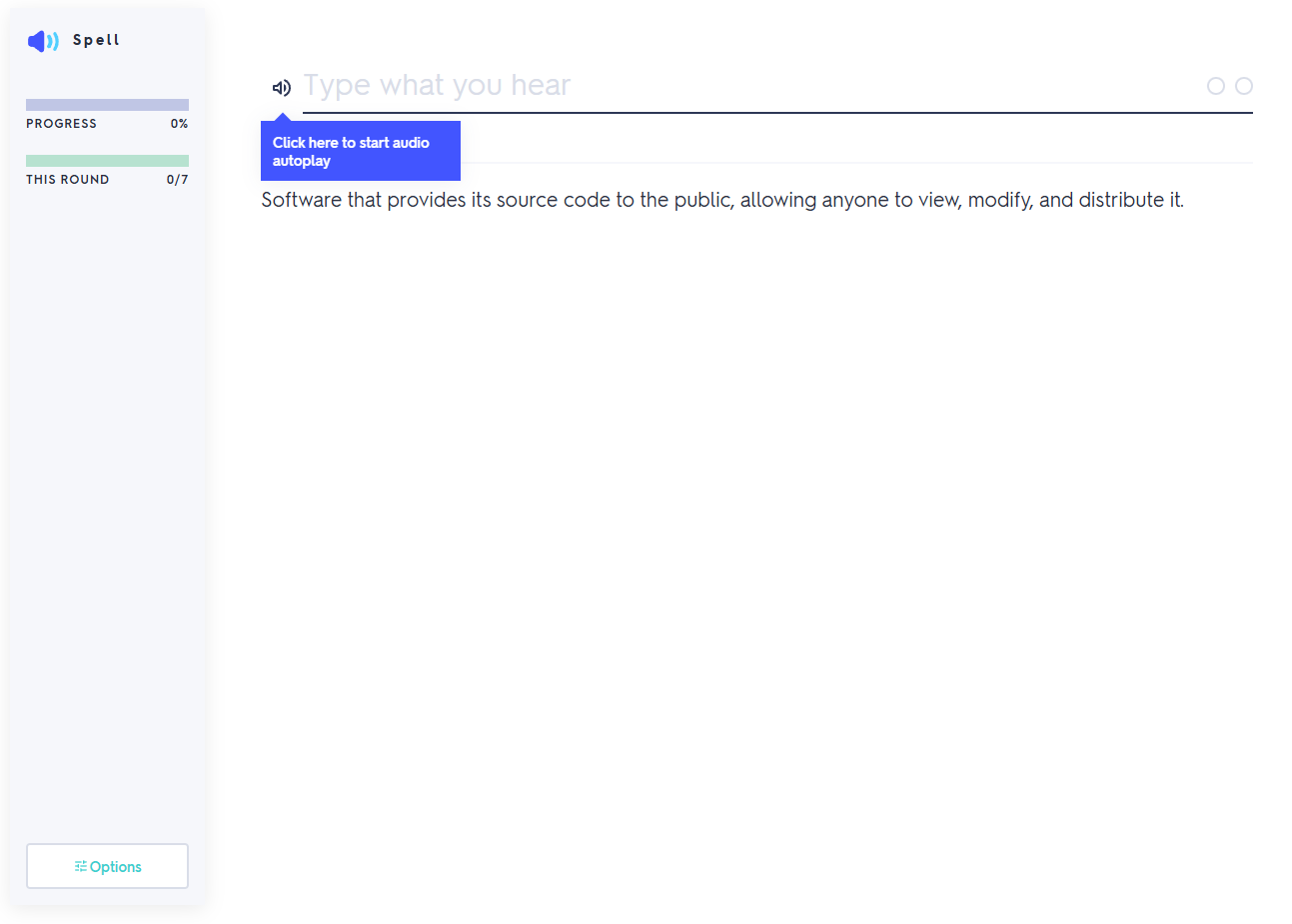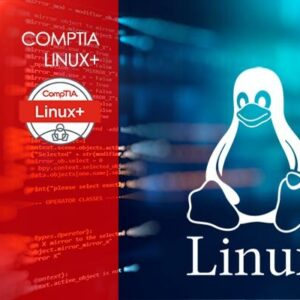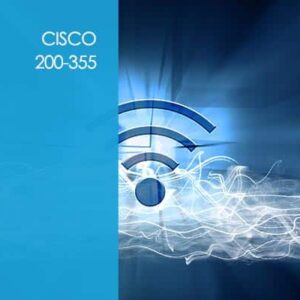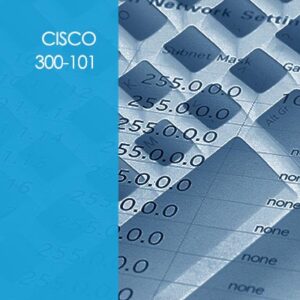Master Linux Administration & Prepare for the CompTIA Linux XK0-005 Certification
Take your Linux expertise to the next level with this in-depth course, designed for IT professionals, system administrators, and tech enthusiasts. Gain the practical skills needed to efficiently manage, secure, and optimize Linux systems while preparing for the CompTIA Linux XK0-005 certification.
What You’ll Learn
This hands-on course provides step-by-step guidance on mastering key Linux concepts and practices, including:
- Fundamental Linux Tasks: Navigate the Linux environment, execute essential shell commands, and utilize built-in help tools.
- User & Group Management: Learn to create, modify, and manage user accounts and group permissions with confidence.
- Permissions & Ownership: Configure file and directory permissions, troubleshoot access issues, and apply advanced attributes.
- Storage Management: Master partitioning, logical volume management (LVM), and modern container storage solutions.
- System Performance Optimization: Explore kernel modules, manage system boot processes, and troubleshoot CPU, memory, and process issues.
Why Choose This Course?
- Comprehensive Curriculum: Covers everything from basic Linux tasks to advanced IT infrastructure concepts.
- Hands-On Training: Gain real-world experience through interactive labs and practical exercises.
- Certification Focused: Aligned with the CompTIA Linux XK0-005 exam objectives to boost your certification success.
- Expert Instruction: Learn from seasoned Linux professionals with industry experience.
Course Breakdown
- Linux Fundamentals: Understand Linux philosophy, shell commands, and built-in help features.
- User & Group Administration: Set up user accounts, manage permissions, and configure groups.
- File Permissions & Ownership: Control file access, troubleshoot issues, and enforce security policies.
- Storage Solutions: Configure partitions, manage file systems, and optimize storage.
- File & Directory Operations: Work with text processing, file manipulation, and directory management.
- Kernel & System Control: Explore Linux kernel functions, manage boot processes, and configure system services.
- Networking & Package Management: Set up network configurations, assign server roles, and handle software packages.
- Linux Security Best Practices: Strengthen system security with firewalls, SELinux, logging, and backup strategies.
- Bash Scripting Essentials: Automate tasks and customize your shell environment.
- Modern IT Infrastructure: Get familiar with Infrastructure as Code (IaC), containerization, and cloud networking fundamentals.
Who Should Enroll?
This course is perfect for:
- IT professionals eager to expand their Linux expertise.
- Individuals preparing for the CompTIA Linux XK0-005 certification.
- System administrators managing Linux-based environments.
- Anyone looking to master Linux for career growth or personal development.
Key Benefits
- Flexible Learning: Access on-demand modules at your own pace.
- Real-World Applications: Practice with industry-relevant scenarios and problem-solving exercises.
- Certification Readiness: Build confidence with content designed to help you ace the XK0-005 exam.
Start Your Linux Journey Today
Take the first step toward becoming a certified Linux administrator. Enroll now and gain the expertise to excel in today’s IT landscape!
Course Outline
Module 1: Performing Basic Linux Tasks
1.1 Introduction to Linux XK0-005
1.2 Instructor Introduction
1.3 Course Introduction
1.4 Identify the Linux Design Philosophy
1.5 Enter Shell Commands
1.6 Shell Commands Activity
1.7 Get Help with Linux
Module 2: Managing Users and Groups
2.1 Assume Superuser Privileges
2.2 Create, Modify, and Delete Users
2.3 Create, Modify, and Delete Groups
2.4 Query Users and Groups
2.5 Configure Account Profiles
Module 3: Managing Permissions and Ownership
3.1 Modify File and Directory Permissions
3.2 Modify File and Directory Ownership
3.3 Configure Special Permissions and Attributes
3.4 Troubleshoot Permissions Issues
Module 4: Managing Storage
4.1 Create Partitions
4.2 Manage Logical Volumes
4.3 Mount File Systems
4.4 Manage File Systems
4.5 Navigate the Linux Directory Structure
4.6 Troubleshoot Storage Issues
4.7 Container Storage Management
4.8 Advanced Data Management and Security for Containers
Module 5: Managing Files and Directories
5.1 Create and Edit Text Files
5.2 Search for Files
5.3 Perform Operations on Files and Directories
5.4 Process Text Files
5.5 Manipulate File Output
Module 6: Managing Kernel Modules
6.1 Explore the Linux Kernel
6.2 Install and Configure Kernel Modules
6.3 Monitor Kernel Modules
Module 7: Managing the Linux Boot Process
7.1 Configure Linux Boot Components
7.2 Configure GRUB
Module 8: Managing System Components
8.1 Configure Localization Options
8.2 Configure GUIs
8.3 Manage Services
8.4 Troubleshoot Process Issues
8.5 Troubleshoot CPU and Memory Issues
8.6 Troubleshooting With system
Module 9: Managing Devices
9.1 Identify the Types of Linux Devices
9.2 Configure Devices
9.3 Monitor Devices
9.4 Troubleshoot Hardware Issues
Module 10: Managing Networking
10.1 Identify TCP-IP Fundamentals
10.2 Identify Linux Server Roles
10.3 Connect to a Network
10.4 Configure DHCP and DNS Client Services
10.5 Configure Cloud and Virtualization Technologies
10.6 Troubleshoot Networking Issues
Module 11: Managing Packages and Software
11.1 Identify Package Managers
11.2 Manage RPM Packages with YUM
11.3 Manage Debian Packages with APT
11.4 Configure Repositories
11.5 Acquire Software
11.6 Build Software from Source Code
11.7 Troubleshoot Software Dependency Issues
Module 12: Securing Linux Systems
12.1 Implement Cybersecurity Best Practices
12.2 Implement Identity and Access Management Methods
12.3 Configure SELinux or AppArmor
12.4 Configure Firewalls
12.5 Implement Logging Services
12.6 Back Up, Restore, and Verify Data
12.7 NFTables – Setting Up Advanced Firewalls
Module 13: Working with Bash Scripts
13.1 Customize the Bash Shell Environment
13.2 Identify Scripting and Programming Fundamentals
13.3 Write and Execute a Simple Bash Script
13.4 Incorporate Control Statements in Bash Scripts
Module 14: Automating Tasks
14.1 Schedule Jobs
14.2 Implement Version Control Using Git
14.3 Identify Orchestration Concepts
Module 15: Installing Linux
15.1 Prepare for Linux Installation
15.2 Perform the Installation
Module 16: Working With Modern IT Infrastructure
16.1 Infrastructure As Code (IAC)
16.2 Containers, Cloud, and Orchestration Concepts
16.3 Container Management
16.4 Container and Cloud Networking Basics
Frequently Asked Questions Related to CompTIA Linux+ (XK0-005)
The CompTIA Linux+ (XK0-005) certification is a globally recognized credential that validates your ability to administer and troubleshoot Linux-based systems in real-world IT environments. It covers essential skills such as managing users and permissions, securing systems, configuring networking, automating tasks with scripting, and optimizing system performance. This certification is ideal for IT professionals looking to demonstrate their expertise in Linux system administration, whether for cloud computing, cybersecurity, or enterprise infrastructure roles.
Linux is the backbone of modern IT infrastructure, powering everything from web servers and cloud platforms to embedded systems and supercomputers. It is widely used in enterprise IT, DevOps, cybersecurity, and cloud computing due to its stability, security, and flexibility. For IT professionals, proficiency in Linux is essential for managing cloud environments, automating system tasks, and ensuring the security and performance of critical applications. Many leading technologies, including Kubernetes, Docker, and AWS, rely on Linux as their foundation.
A Linux system administrator must be proficient in several key areas, including:
User and Group Management – Creating, modifying, and securing user accounts and groups.
File System and Permissions – Managing access controls using permissions and ownership settings.
Networking Configuration – Setting up IP addresses, firewalls, and troubleshooting connectivity issues.
System Security – Implementing security measures like SELinux, firewalls, and intrusion detection.
Process and Resource Management – Monitoring system performance and optimizing resource usage.
Kernel Configuration and System Updates – Understanding kernel modules and ensuring system stability.
Scripting and Automation – Using Bash scripting and automation tools like Ansible to streamline tasks.
Mastering these skills enables IT professionals to maintain stable, secure, and efficient Linux environments.
Linux is a cornerstone of modern IT infrastructure, offering scalability, security, and flexibility. It is widely used in:
Cloud Computing – Major cloud platforms like AWS, Google Cloud, and Azure offer Linux-based instances.
Containerization and Virtualization – Technologies like Docker, Kubernetes, and KVM rely on Linux.
DevOps and Automation – Linux integrates with CI/CD pipelines and automation tools such as Ansible, Terraform, and Jenkins.
Enterprise Servers – Many organizations run mission-critical applications on Linux due to its reliability.
Cybersecurity – Linux provides robust security tools and configurations to safeguard IT environments.
Because of these advantages, Linux remains essential for IT professionals managing and deploying modern technology solutions.
Linux administrators rely on a variety of tools to manage systems efficiently. Some of the most commonly used include:
Package Managers – YUM, APT, and DNF for installing and managing software packages.
Shell Scripting & Automation – Bash and Python for automating repetitive tasks.
System Monitoring & Logging – systemd, journalctl, and top for performance monitoring and troubleshooting.
Network Configuration – ip, ifconfig, netstat, and firewall tools for managing connectivity and security.
Security & Access Control – SELinux, AppArmor, and Fail2Ban for enforcing security policies.
File System Management – LVM, fdisk, and ext4 utilities for managing storage efficiently.
These tools help administrators maintain system performance, security, and stability across Linux environments.
Your Training Instructor

Frank Schmidt
Linux Subject Matter Expert | Course Author
Frank brings over 35 years of IT experience, having graduated with honors with a B.S. in Computer Science from the University of Southern Mississippi. He began his career as a software developer at Shell Oil before transitioning to IT training and workforce development, where he has spent more than 30 years. Since the 1990s, he has worked extensively with UNIX and Linux operating systems, delivering over 1,000 training sessions. As a course author and subject matter expert, he has developed multiple UNIX and Linux courses, ranging from introductory to advanced system administration. He has also taught the CompTIA Linux+ exam preparation course and holds the Linux+ certification.
